Excellent Ideas for What to do in Faro Off-Season
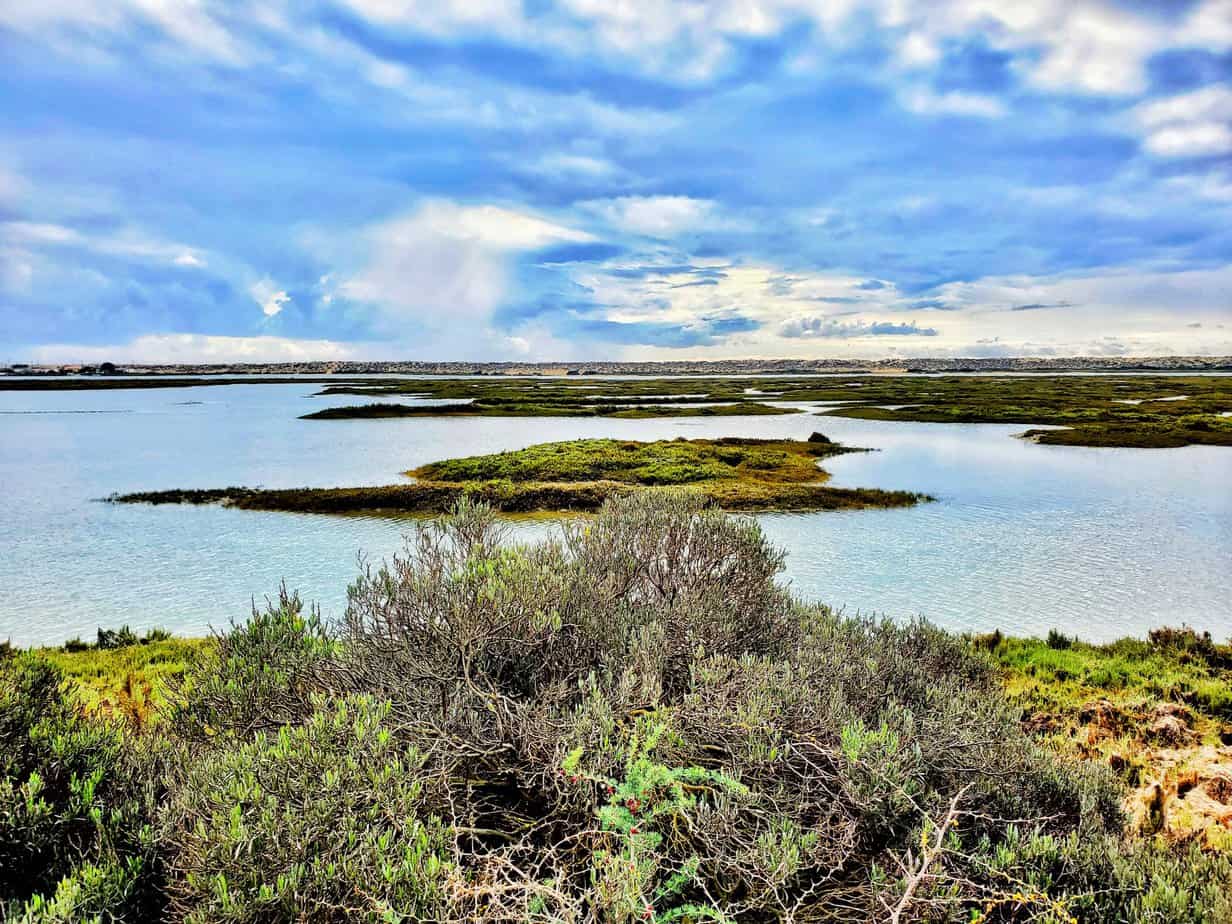
Faro, the waterfront capital city of Portugal’s Algarve is a gorgeous place that is a perfect addition to any Portugal vacation, whether as a day trip, a weekend break or as a base for a longer holiday. I highly recommend Faro as a great vacation option on-season or off-season. Faro is still both affordable and authentically Portuguese.
While, of course, Faro is an excellent place to visit at any time of the year, off-season, or winter in Faro is really special. In this article, we’ll talk about what to do in Faro off-season. Everything mentioned in this article is also great for the warmer weather, but I’m focusing on the off-season because that’s when I love Faro best.
There are affiliate links in this article. If you click and make a purchase I could make a small sum at zero cost to you. Thank you!
Highlights – why do people visit Faro off-season?
📌 Many people see Faro as purely an airport town but please don’t be do this, Faro really is one of the cutest places you could explore. It’s also a great base for exploring the Algarve and makes a great alternative to staying in one of the many resorts along the coast. If you’re wondering if Faro is worth visiting then let me clear this up for you, right now: Faro is absolutely worth visiting, especially in the off-season.
📌 People who know come to Faro for its access to nature – think gorgeous beaches, the nature reserve, Ria Formosa, its history and for its great culinary scene.
⭐️ I hope you’ll also consider visiting the gorgeous Portuguese city of Porto even if you can only make it up there for 1 day or for a long weekend it’ll be worth it.
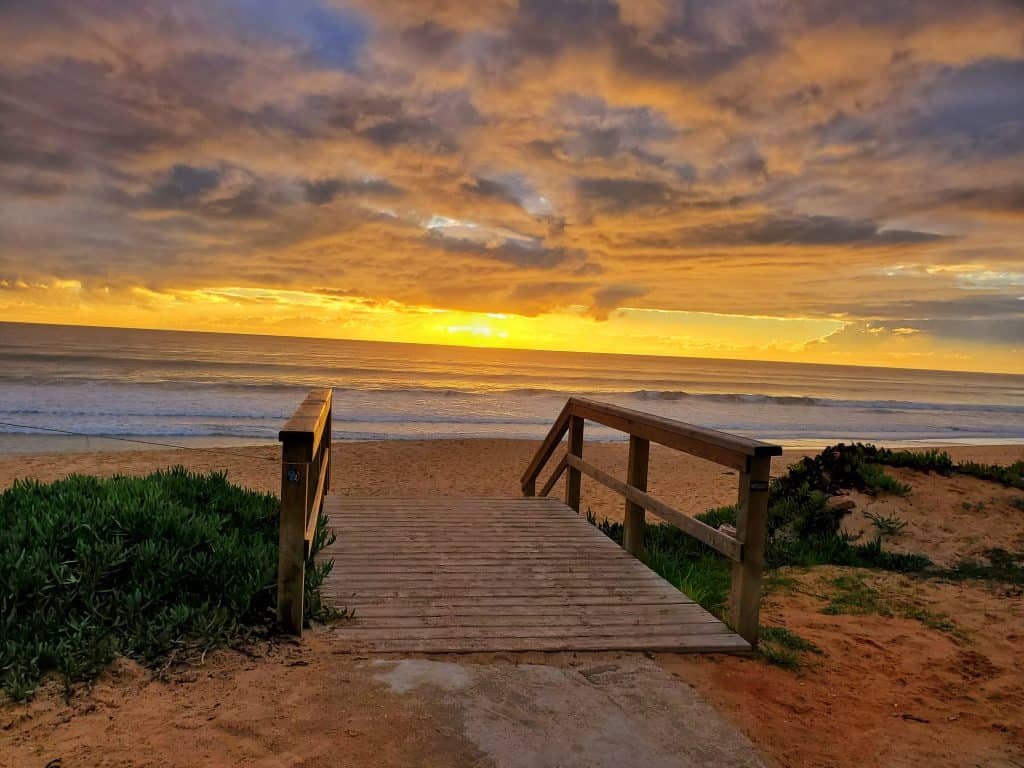
Where is Faro?
Faro is located in the Algarve, almost slap-bang in the middle of the southern coast of Portugal. It is well served by its small but efficient airport and good access roads. It is a three-hour drive from both Portugal’s capital city, Lisbon and from Seville, in Spain and a five hour drive from Porto.
What to do in Faro off-season
There is so much to do and see in Faro that it’s fast become one of my favourite weekend spots, especially off-season when there are fewer visitors and we can feel as if we have Faro to ourselves. Pretty much anything you can do in the summer in Faro, you can do in the winter in Faro too.
Don’t forget that “off-season” for southern Portugal doesn’t necessarily mean freezing cold. We have visited in both October and December and while October was still hot and December was much cooler. If you’re coming from countries north of Portugal you may not find it so cold in Faro. In fact, a Portuguese winter break is a great option.
- Oct – average high of 23C (73F)
- Nov – average high of 19C (66F)
- Dec – average high of 17C (62F)
- Jan – average high of 16C (61F)
- Feb – average high of 17C (62F)
Faro’s Old Town off-season
📌 Strolling around the Cidade Velha, the old town of Faro off-season is a lot of fun. I am particularly enamored of the traditional cobbled picturesque streets; the black and white patterns are always a delight. I admit that I kind of expected Faro to be fairly similar to many of Southern Spain’s small towns but it really isn’t. It’s distinctly Portuguese and absolutely has its own personality and charm.
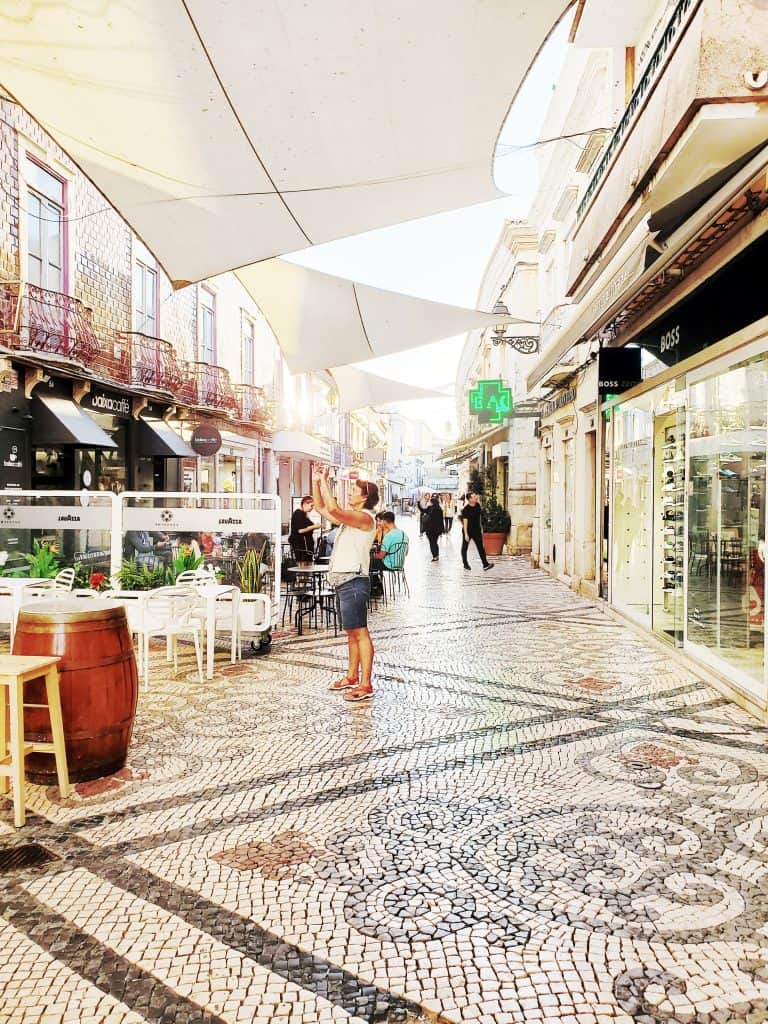
📌 I like to begin down at the small marina (Doca de Faro) where you will find the Faro city letters, lovely views over the marina, especially at sunset and the delightful Jardim Manuel Bivar, which is a small plaza. From here you can easily find the Arco da Vila, which I actually liked best for the storks’ nests nearby.

📌Just in front of the Musikpavillon on the plaza is an entrance to the pedestrianized shopping streets.
📌 The cathedral is said to be well worth a visit but we substituted it for the Capela dos Ossos de Faro, which is part of the Igreja do Carmo. This is a small chapel made entirely out of skulls and bones and I highly recommend checking it out. Apparently, the bones all come from monks whose bodies were exhumed from a nearby cemetery. I found it absolutely fascinating, mainly because I couldn’t stop thinking about how skulls could fall on my head.
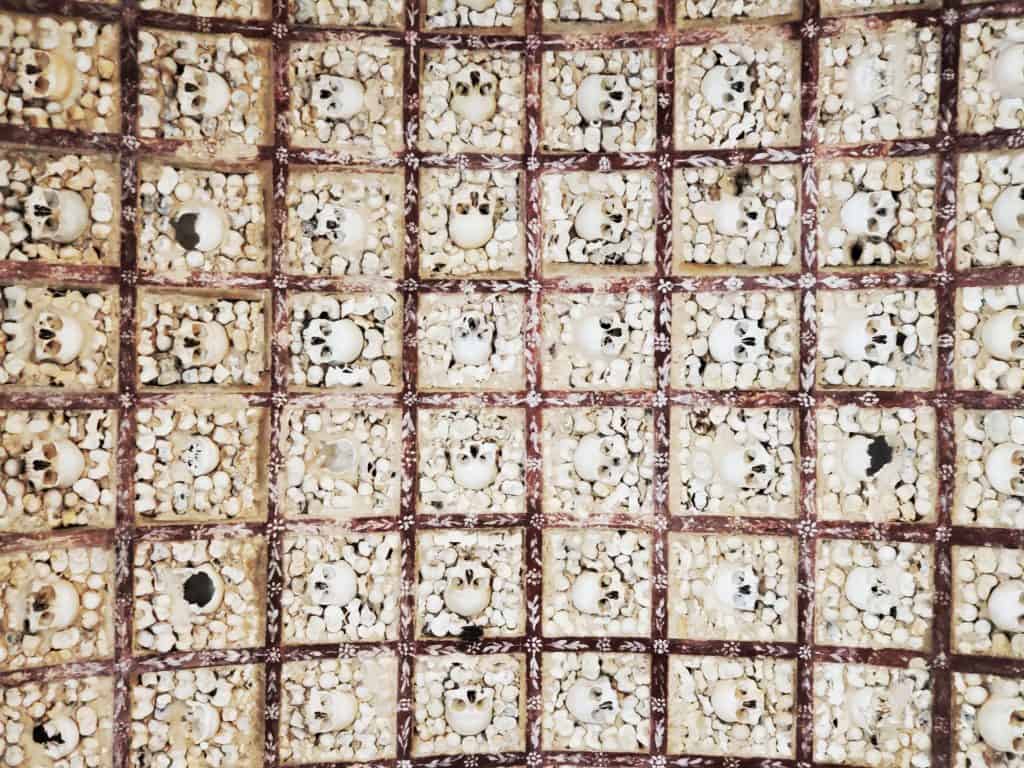
📌 There are a few museums in Faro, including the Municipal Museum, the Maritime Museum and the Algarve Life Sciences Centre.
📌 We also enjoyed strolling around the Mercado Municipal, getting to know Portuguese food a little better and buying up sooo many little cheeses to take home. Be sure to have cash in this market though as no one appeared to take card.
📌 Tip: Book a guided bike tour around Faro to beat the cold.
Beaches near Faro in the off-season
I am a huuuuuuge fan of beaches in the cold. I grew up in south-east England and my family was regularly on the beach, no matter what the weather. The city of Faro has its marina but the centre of town isn’t directly on the beach. Of course, given its location in the middle of The Algarve, beach access is easy.
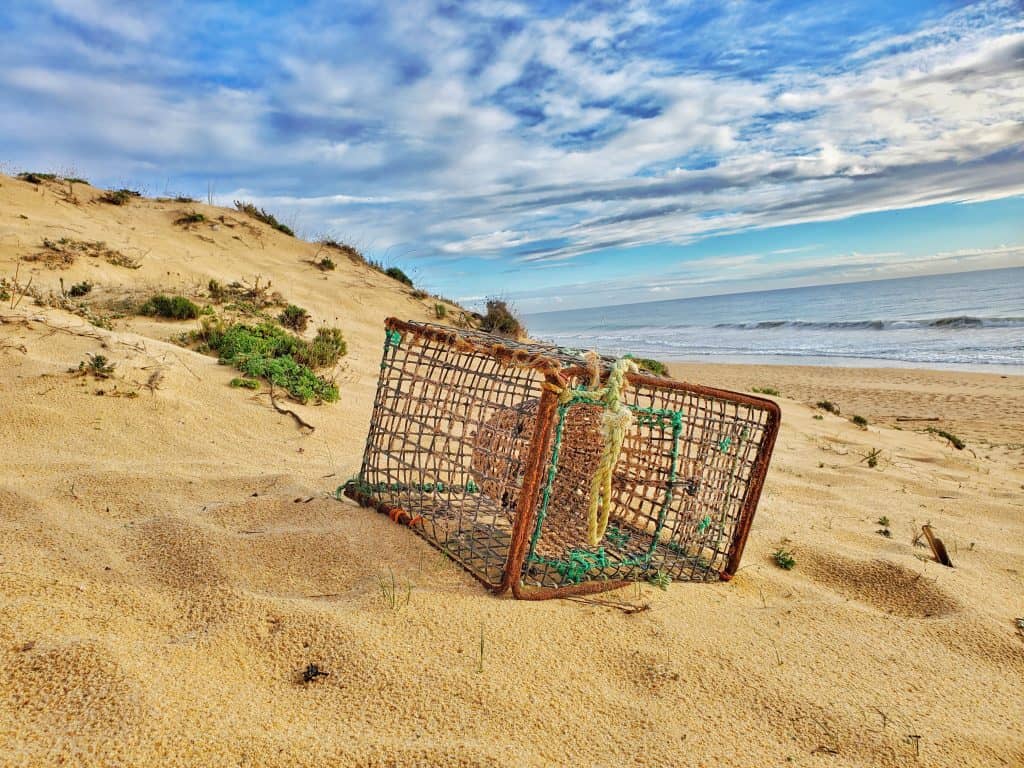
📌 Right by the airport is the most easily accessible beach, Praia de Faro. Simply drive (or walk) across the narrow bridge joining the spit to the mainland and right there is a carpark and a gorgeous, sandy beach. While it’s less developed than other beaches and definitely has a ‘local’ feel to it, I absolutely love it. There are a number of beachside cafes and bars, and some of these do remain open in the winter. In early December my family and I took a long walk through the Ria Formosa and onto the Praia de Faro. We walked along this gorgeously cold, blustery and deserted beach for a good couple of hours. We were very grateful for our hot chocolates and coffees when we reached the strip of cafes.
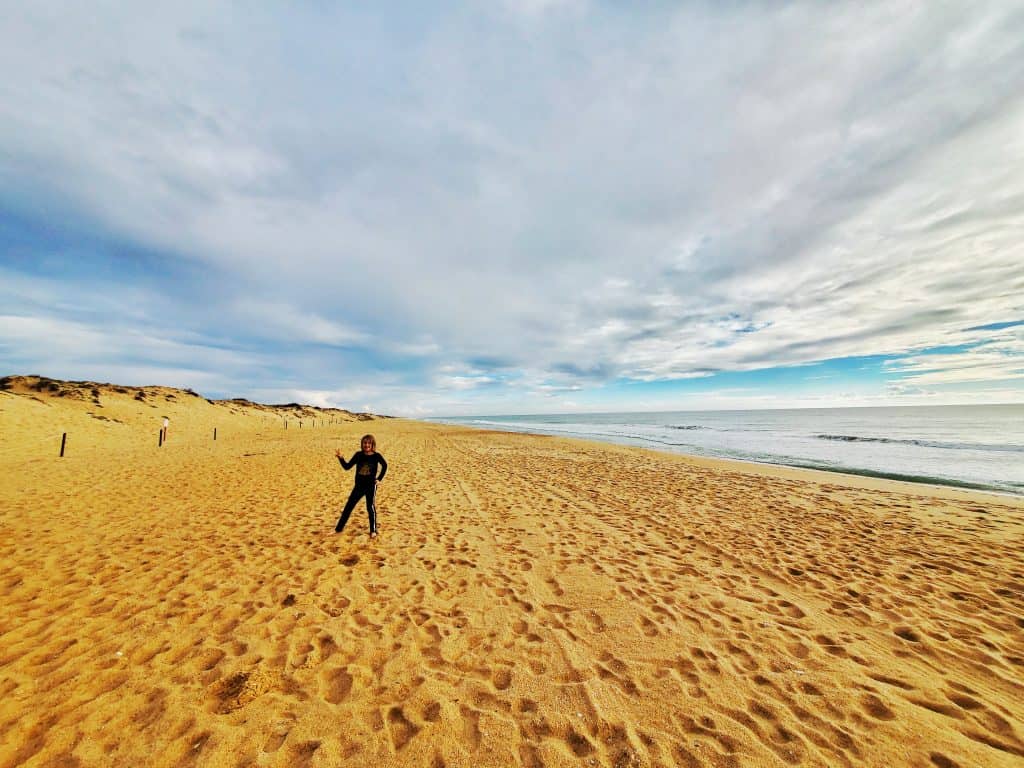
📌 Other easily accessible beaches from Faro include Praia de Quinto do Lago, Praia da Barrinha and Praia de Ilha Deserta. Ilha da Culatra can be accessed via ferry or as part of a tour.
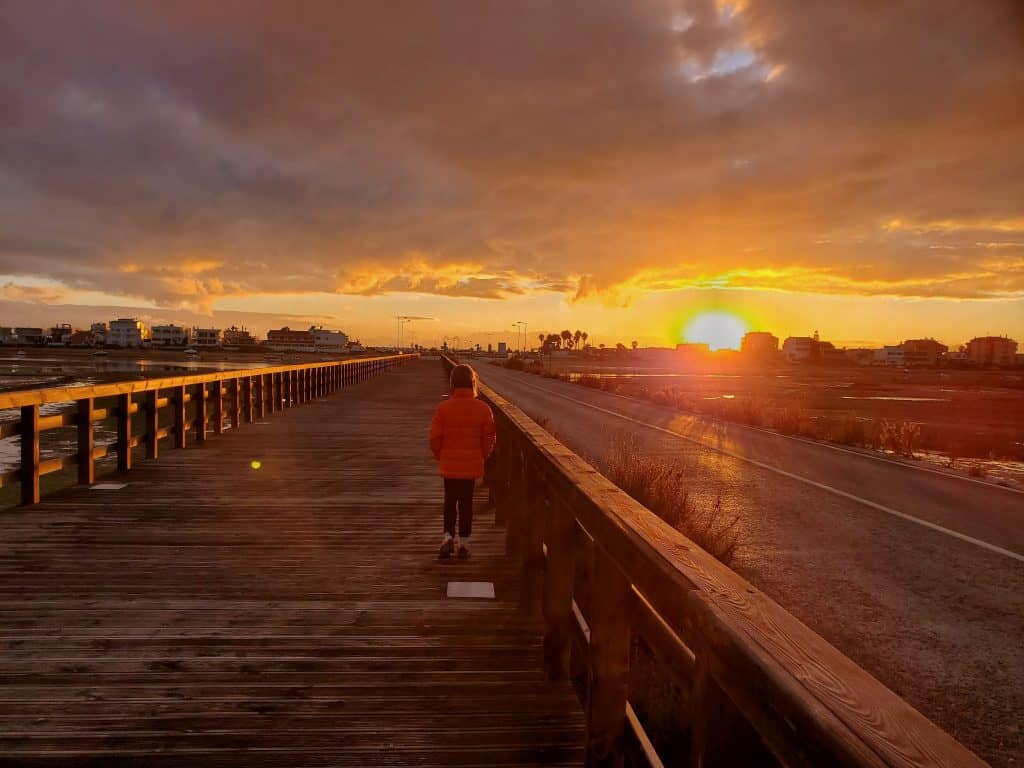
Parque Natural da Ria Formosa
📌 When I began researching the Algarve it was the Ria Formosa natural park that really grabbed my attention and given that it was recently voted one of the seven natural wonders of Portugal, this is hardly surprising. The Ria Formosa is a marine region with barrier islands that connects to the sea via six inlets. The park is 18,000 hectares and is protected by its barrier islands.
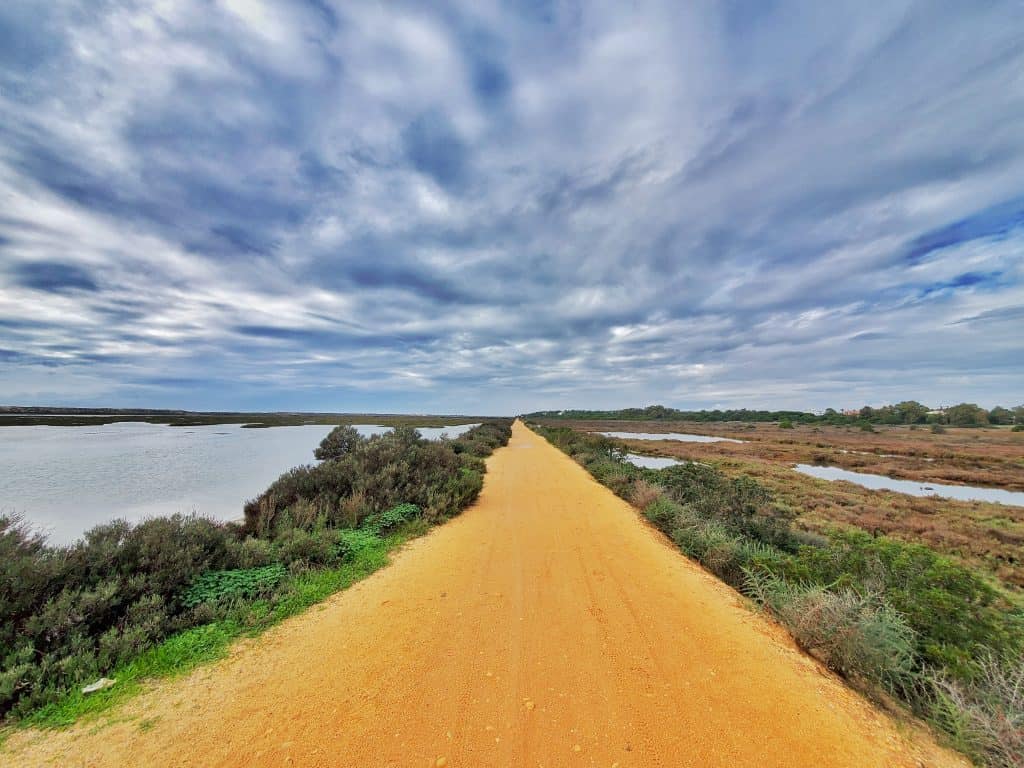
📌 Thus far we have taken two separate walks in the Ria Formosa. One took us into a forest (ok, ok, we were kinda lost but it was tons of fun) and the second was along the Ludo Hiking Trail. For this we parked in the Praia de Faro carpark (mainland side of the bridge). We walked to Ponte da Quinta do Lago (four kilometres) before heading onto the beach and walking approximately the same back again. This is an incredibly gorgeous walk. We saw flamingos, stunning skies, and so much plant life (less bird life than in summer, for sure).
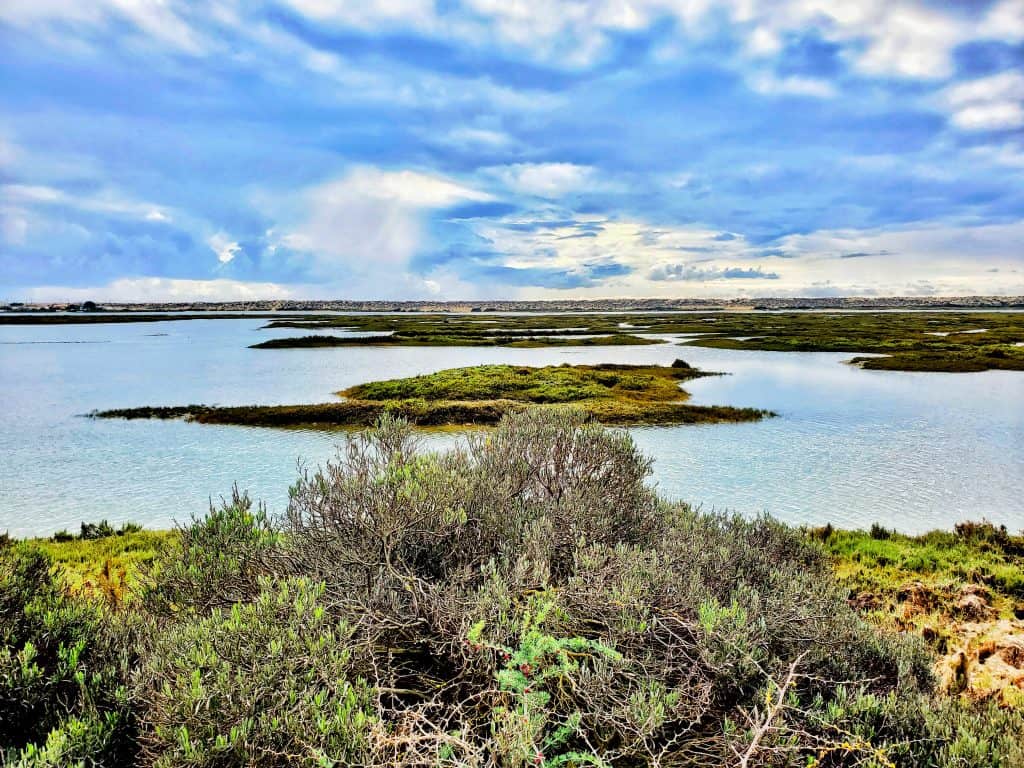

📌 We did not see the Roman salting tanks but I was excited to know they were nearby.
If you’re not sure about just heading off on this walking trail alone, there are plenty of tour options:
Segway Tour in the Ria Formosa
Birdwatching Tour in the Ria Formosa
Off-season Faro: the details
Where to stay in Faro
Given the plethora of options for all budgets, you’re never going to struggle to find somewhere to stay in Faro, whether you’re after a beach house or you’re looking to find a hotel in the centre of Faro you’ll be sure to find something great and in your price range.
Where to eat in Faro
🍽 My two favourite restaurants in Faro are Cantinho de Ronha and Nepali Food Faro. Cantinho de Ronha serves incredible Portuguese food and is somewhere I go every time I’m in Faro, so fabulous is their arroz de marisco (seafood rice). In winter this is a hearty dish that will warm you up after a long day’s walking and exploring. Be sure to drink plenty of their great local wine, too, while you’re at it.
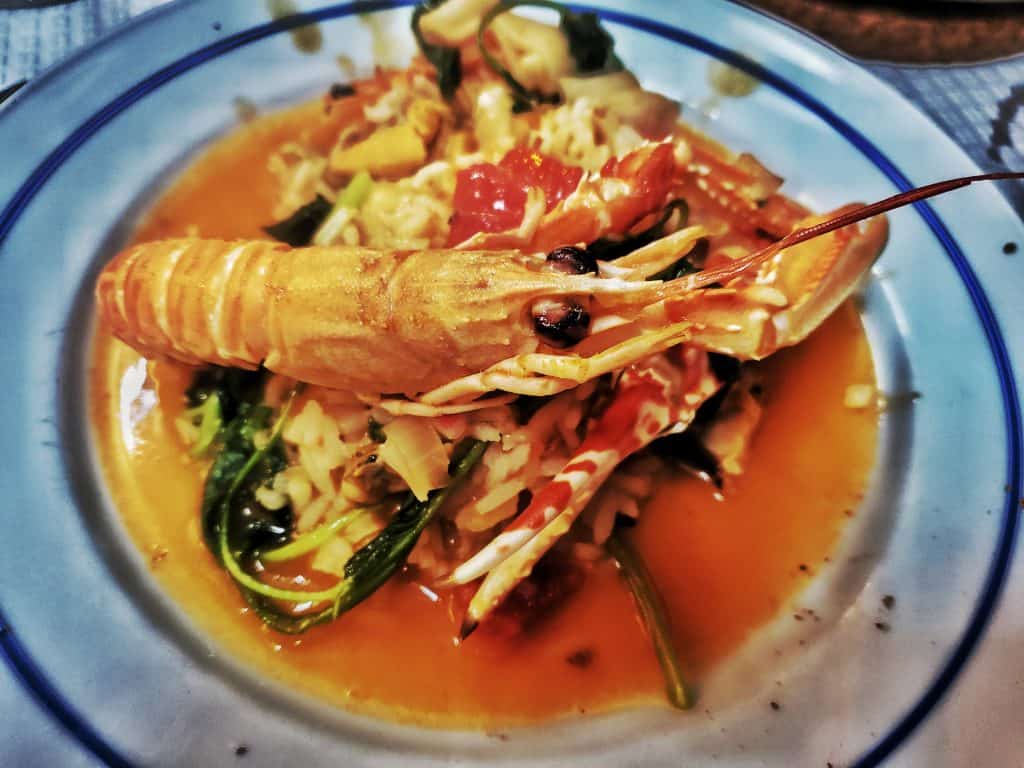
🍽 Nepali Food Faro, unsurprisingly, serves Nepali food. We were very happy to find this place, which is owned and run by a guy from Nepal. The food is great and even my kids ask to go back here when we’re in town.
Top Tip: Head to Lidl, Aldi or any other supermarket to stock up on cheap but delicious local wine and port. I recently got a bottle of port for €5 that is really delicious. No need to go to the overpriced tourist port shops in town when this works so well.
Driving and parking in Faro
🚗 There are plenty of options for car rental in Faro and once you’re up and driving, the roads are really pretty great. Toll roads are easy if you’re in a rental car since you either rent a transponder that pays your toll fees automatically or if you’re driving from Spain in a rental car you just follow the “foreign cars this way” signs, add your credit card to their system and off you go, tolls are automatically deducted as you drive.
🚗 Parking can be difficult in Faro if your hotel doesn’t have a carpark. Faro old town has narrow streets and while much of it does have street parking, obviously you can never guarantee finding a space. Many people will be nervous to even drive through the narrow streets if they haven’t driven in Europe too much. There are official car parks around the city, it’s worth googling and having one in mind before you reach the city limits.
🚗 If you choose not to drive you can either take get a bus from Faro Airport or use a transfer service to get into the city. A car, of course, is a great option because it allows you to see more of Portgual, and believe me, there is sooooo much to see in Portugal.
🚗 A good travel tip for anyone exploring Portugal is to consider using the train or bus service to get around.
What to pack for an off-season trip to Faro
If you’re visiting Faro in the off-season then please don’t forget to pack:
- Warm jacket
- Beanie
- Gloves
- Hot water bottle (if you choose not to stay in a hotel but instead stay in a traditional home)
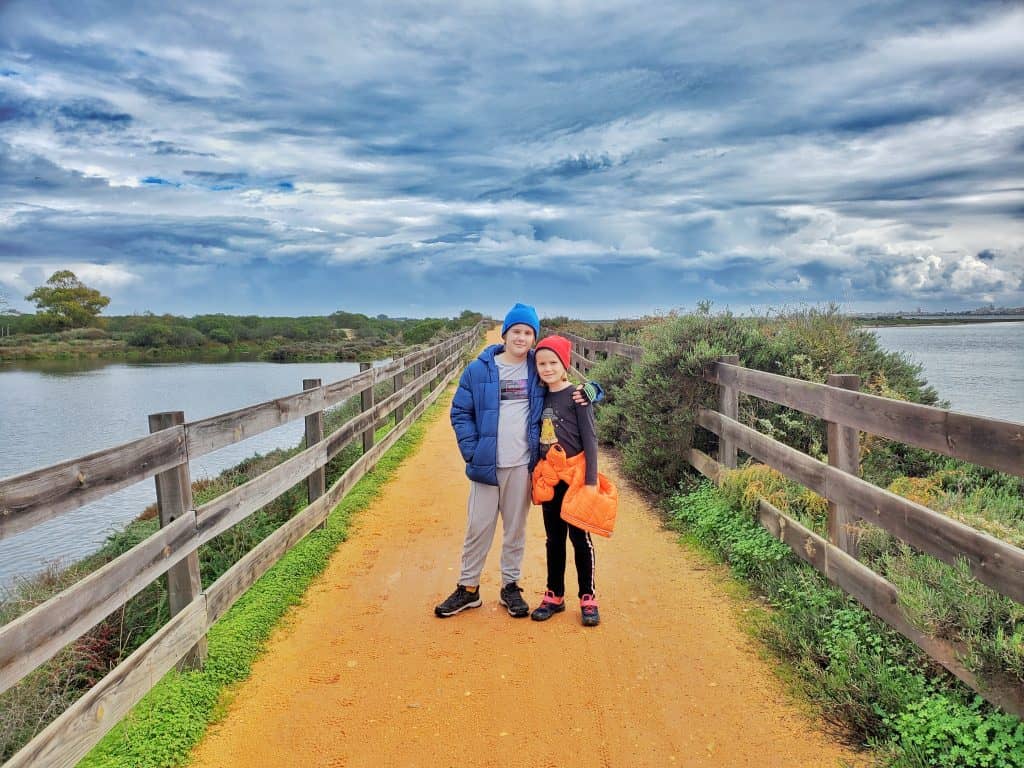
Great day trips from Faro
There are many incredible day trip options from Faro, including:
📌 Tavira – Tavira is a gorgeous town around thirty minutes drive from Faro. It is considered the oldest settlement in Portugal. It has good beaches, a small castle and a lovely town-centre and river. If you’re driving, it’s easy to wander around, or you could take a tour that includes Tavira on its itinerary.
📌 Estói – Estói is a small village that is cute to wander around. It is home to some pretty impressive Roman ruins.
📌 Benagil Cave Tour – while this tour might be better in summer since it is a boat tour with swimming options, I would still opt for it at any time of the year and from photos people are still swimming here even in winter. Who wouldn’t want to visit a sixteen million-year-old cave? This trip is top of my list of things to do next time I’m in Faro. I particularly would love to kayak to the cave.
📌 Dolphin and Wildlife Tour – with boats leaving from the city docks, a dolphin tour while in Faro is a great opportunity to enjoy Faro’s abundant nature.
📌 Lagos and Sagres – Lagos is just over an hour from Faro and Sagres is just thirty-five minutes further west from Lagos, making them a perfect combination for a day trip from Faro. Lagos is very much about walks, beaches and adventure. Sagres, like Faro, has not been touched by mass tourism and so remains a great place to really feel Portugal. It is home to gorgeous beaches and a fortress. Sagres is the most southwestern point in Europe.
I hope you’ve found this article interesting and useful and that I’ve encouraged you to take a winter trip to Faro. Do drop me a comment below to share your (positive!) thoughts and, if you’ve really enjoyed it, why not share on social media or even perhaps donate through the link below to help me keep my blog free.
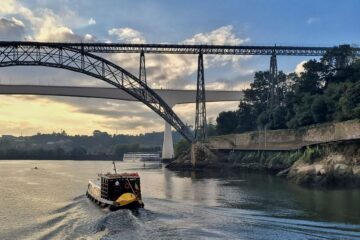
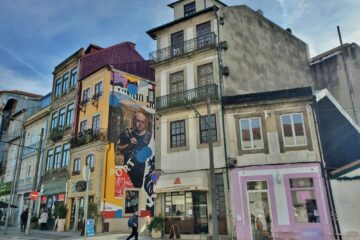
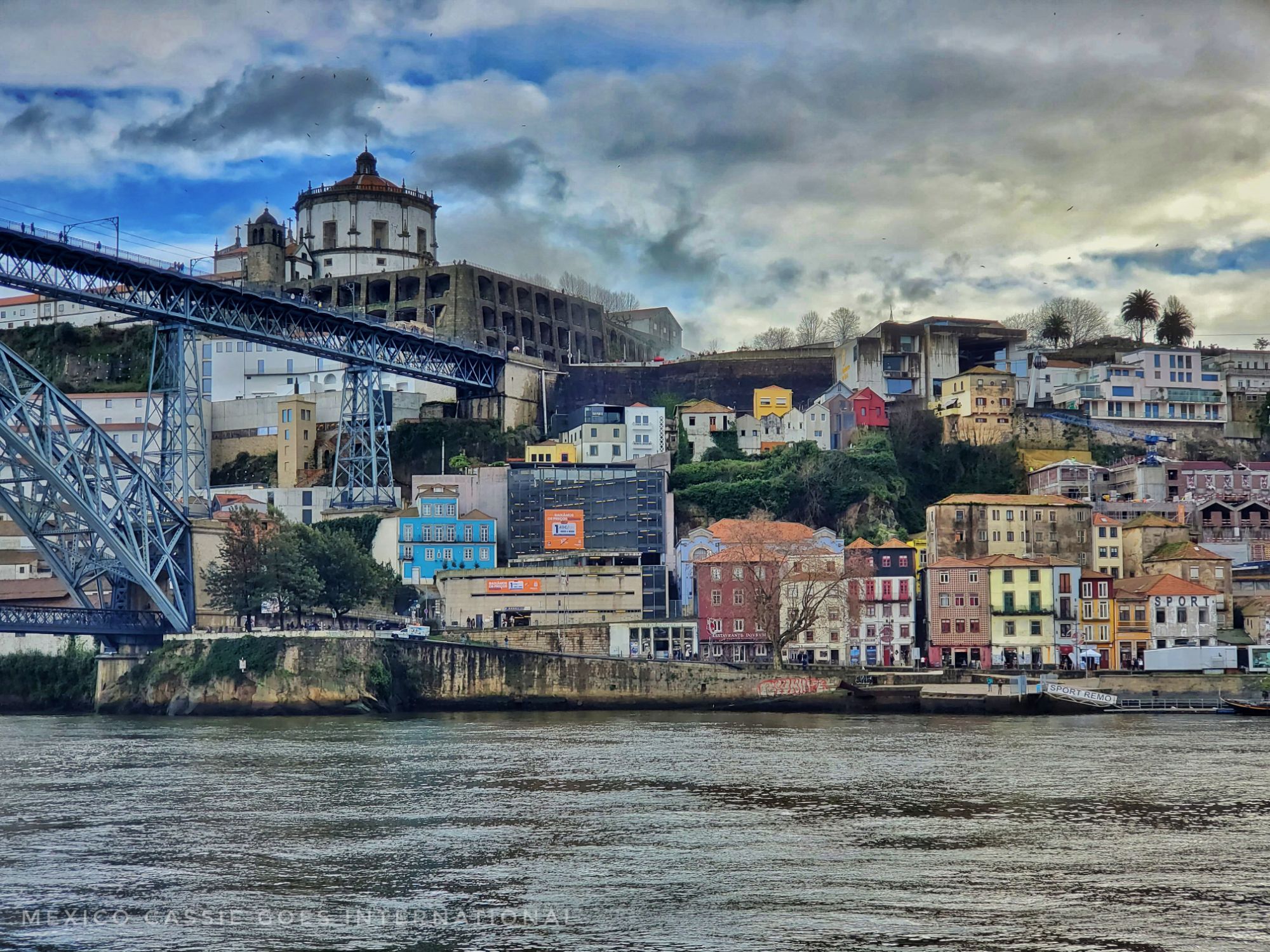
2 Comments
FredinMotul · 21/12/2022 at 5:55 pm
If I ever get lucky enough to visit while you guys are still near there, I would love to go with YOU!! Reminds me a lot of Coastal NC, except the Sunset seems off for that. Really great looking, and how could you complain with those Temperatures?? Awesome
Cassie · 22/12/2022 at 2:27 am
You should definitely try to make it over. We’ll be here for the foreseeable future now – kids in school and all that. Temps aren’t too bad but after so long in Mexico we are definitely having to recover our European-winter-legs!